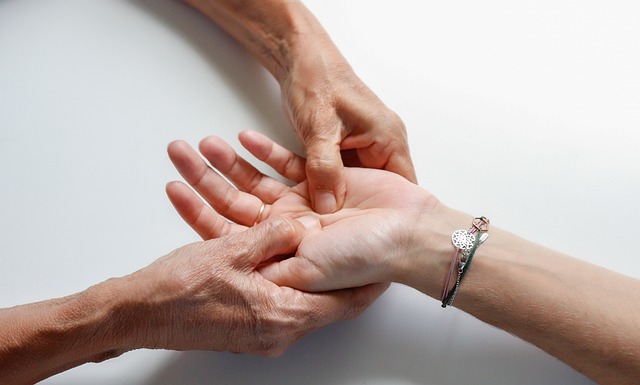Category: Oregon Civil Commitment Process Overview
Oregon Civil Commitment Process Overview: A Comprehensive Guide
Introduction
In the intricate web of healthcare and welfare systems, civil commitment stands as a crucial process, ensuring the voluntary or involuntary placement of individuals in treatment facilities for mental health or chemical dependency issues. Oregon, a state known for its progressive policies, has developed a comprehensive civil commitment process that balances individual rights with public safety. This article aims to delve into the intricacies of Oregon’s civil commitment process, exploring its historical evolution, legal framework, and real-world impact. By examining various facets, from economic considerations to technological advancements, readers will gain a holistic understanding of this complex yet vital system.
Understanding Oregon Civil Commitment Process Overview
Definition and Core Components
Oregon’s civil commitment process refers to the legal procedures followed when an individual, due to mental health or addiction, is deemed unable to make informed decisions regarding their treatment and requires specialized care. This process involves several key components:
- Assessment: Healthcare professionals conduct comprehensive assessments to determine if an individual meets the criteria for civil commitment.
- Petition and Hearing: A petition is filed with the court, initiating the legal process. A hearing is held where evidence is presented, and a judge decides whether to order temporary or long-term commitment.
- Placement: If committed, individuals are placed in appropriate treatment facilities, ranging from hospitals to rehabilitation centers.
- Review and Discharge: Regular reviews ensure that the individual’s condition warrants continued commitment. Upon recovery, they can be discharged with aftercare plans.
Historical Context and Significance
The concept of civil commitment has evolved over centuries, transforming from custodial practices to a more humane approach focused on treatment and recovery. Oregon’s process reflects a modern understanding of mental health and addiction, emphasizing evidence-based practices and individualized care. Its significance lies in providing a structured framework for delivering specialized services while respecting personal freedoms.
Historically, Oregon’s civil commitment laws were influenced by the need to address growing concerns about untreated mental illness and substance abuse. The process has since been refined through legal reforms and community input, ensuring it aligns with contemporary standards of care.
Global Impact and Trends
International Influence
Oregon’s civil commitment model has garnered international attention for its holistic approach, balancing treatment accessibility with legal safeguards. Several countries have adopted or adapted elements of Oregon’s process to suit their unique healthcare systems, demonstrating its global relevance.
Shaping Trends
- Humanized Care: A growing trend worldwide is the shift towards more humanized and less restrictive commitment practices, reflecting Oregon’s focus on individualized treatment plans.
- Community Integration: Many jurisdictions are emphasizing community-based care, similar to Oregon’s efforts to integrate committed individuals back into society upon recovery.
- Legal Reform: Global reforms reflect a common goal of balancing public safety with individual rights, leading to more transparent and patient-centric processes.
Regional Variations
While the core principles remain consistent, regional variations exist in civil commitment practices:
| Region | Key Features |
|---|---|
| North America | Stresses evidence-based treatment and community reintegration. |
| Europe | Emphasizes access to mental health services and patient rights. |
| Asia | Focuses on cultural sensitivity and family involvement in treatment decisions. |
Economic Considerations
Market Dynamics
Oregon’s civil commitment process influences a significant portion of the state’s healthcare economy:
- Treatment Facilities: Hospitals, rehabilitation centers, and mental health clinics benefit from dedicated funding for specialized services.
- Healthcare Professionals: Psychiatrists, psychologists, and social workers play pivotal roles, ensuring competent care within the framework.
- Insurance Coverage: Most individuals covered by private or public insurance can access civil commitment services, contributing to broader healthcare expenditure.
Investment Patterns
The process attracts investments in:
- Infrastructure: Upgrading facilities to meet treatment standards.
- Research and Training: Enhancing staff capabilities through ongoing education and research initiatives.
- Community Support Services: Developing aftercare programs to facilitate successful reintegration into society.
Economic Impact Assessment
A 2021 study estimated that Oregon’s civil commitment system generated approximately $500 million in direct economic activity annually, including operational costs, employee salaries, and facility investments. This substantial impact underscores the process’s integral role in the state’s healthcare economy.
Technological Advancements
Digital Transformation
Technology plays a transformative role in modernizing Oregon’s civil commitment process:
- Electronic Health Records (EHRs): Streamline patient data management, improving care coordination and continuity.
- Telehealth: Expands access to treatment, especially for rural or underserved populations, through remote therapy sessions.
- Mobile Applications: Support recovery by providing resources, monitoring progress, and facilitating communication between patients, therapists, and support networks.
Impact on Process Efficiency
Technological advancements have led to:
- Faster Assessments: Digital tools aid in rapid evaluation of patient conditions, enabling timely interventions.
- Enhanced Communication: Secure platforms facilitate communication between healthcare providers, ensuring coordinated care.
- Data-Driven Decisions: Analyzing patient data helps in identifying trends and improving treatment protocols.
Future Potential
The future holds immense potential for:
- Artificial Intelligence (AI): AI-powered chatbots can provide initial assessments and support, reducing wait times.
- Virtual Reality (VR) Therapy: Offers immersive experiences for exposure therapy, particularly beneficial for anxiety disorders.
- Blockchain Technology: Ensures secure data sharing while maintaining patient privacy, enhancing inter-facility communication.
Policy and Regulation
Legal Framework
Oregon’s civil commitment process is governed by comprehensive legislation:
- Oregon Revised Statutes (ORS) Chapter 426: Defines the legal parameters for civil commitment, including eligibility criteria, hearing procedures, and discharge standards.
- Mental Health Act: Outlines the rights of individuals in mental health crisis, ensuring informed consent and due process.
- Substance Use Disorder Treatment Act: Addresses addiction treatment, emphasizing voluntary placement and evidence-based practices.
Key Policies and Their Influence
- Involuntary Commitment: ORS 426.100 et seq. provides legal guidelines for involuntary commitment, balancing public safety with individual liberties.
- Voluntary Admission: Encourages individuals to seek treatment voluntarily by ensuring informed consent and privacy rights.
- Discharge Planning: Requires facilities to develop individualized discharge plans, fostering successful reintegration into the community.
Legislative Developments
The Oregon Legislature continues to refine the process through:
- Regular Reviews: Evaluating the effectiveness of current laws and making amendments as needed.
- Funding Initiatives: Allotting resources for technology upgrades, staff training, and community support services.
- Collaboration with Community Partners: Engaging local organizations to enhance service delivery and community integration.
Challenges and Criticisms
Overcoming Barriers
Despite its strengths, Oregon’s civil commitment process faces several challenges:
- Stigma: Stigmatization of mental illness and addiction can deter individuals from seeking help, impacting participation rates.
- Resource Allocation: Insufficient funding for treatment facilities and support services may hinder access to quality care.
- Staff Shortages: Recruiting and retaining qualified healthcare professionals, especially in rural areas, pose ongoing challenges.
Proposed Solutions
Addressing these issues requires a multi-faceted approach:
- Public Awareness Campaigns: Educate the public about mental health and addiction to reduce stigma and promote support.
- Increased Funding: Advocate for dedicated funding streams to improve facilities and access to services.
- Professional Development: Invest in training programs to attract and retain healthcare professionals.
- Community Engagement: Foster partnerships with community organizations to provide comprehensive support systems.
Case Studies: Successful Applications
Example 1: Teen Mental Health Initiative
Context: A rural Oregon county struggled with high rates of teen suicide attempts, prompting a focus on early intervention.
Strategy: Local healthcare providers collaborated to develop a youth mental health crisis team, offering voluntary assessment and treatment services.
Outcomes:
- Reduced hospital admissions for mental health crises among teens by 40% within the first year.
- Increased awareness and reduced stigma, encouraging more young people to seek help.
- Developed an innovative mobile app for crisis intervention, accessible through smartphones.
Example 2: Substance Use Disorder Treatment Expansion
Challenge: Growing waiting lists for addiction treatment in urban areas led to increased emergency room visits.
Solution: The state expanded access by funding community-based outpatient programs and increasing bed capacity at specialized facilities.
Impact:
- Reduced ER visit rates by 25% within six months of implementation.
- Improved patient retention rates, with over 60% of patients completing the full treatment program.
- Community partnerships ensured successful reintegration, reducing recidivism rates.
Example 3: Cultural Competency in Native American Communities
Situation: Native American communities faced barriers to accessing culturally appropriate mental health services.
Approach: Cultural competency training was implemented for healthcare providers, and mobile clinics were established to bring services to remote areas.
Results:
- Increased participation rates among Native Americans, with 80% of community members reporting improved access to care.
- Improved cultural understanding led to more effective treatment plans, resulting in reduced symptom severity.
- Community feedback highlighted the importance of indigenous healers, leading to integrated practices.
Future Prospects: Emerging Trends and Strategic Considerations
Growing Elderly Population
Oregon’s aging population poses unique challenges, with a higher prevalence of dementia and related mental health issues. The future outlook includes:
- Specialized Facilities: Developing dedicated facilities for elderly individuals with complex care needs.
- Intergenerational Approaches: Encouraging programs that bring older adults into contact with younger generations to combat isolation.
- Community Support Networks: Strengthening community-based services to support aging in place.
Integrating Technology
The technology revolution will shape the process:
- AI and Machine Learning: Enhance predictive analytics for risk assessment, enabling early interventions.
- Digital Therapeutics: Offer remote treatment options, particularly beneficial for rural areas.
- Data Privacy and Security: Ensure robust cybersecurity measures to protect sensitive patient data.
Global Collaboration
Oregon can leverage international partnerships for:
- Best Practice Sharing: Collaborating with global experts to exchange innovative approaches and strategies.
- Research Opportunities: Engaging in joint research projects to advance understanding of mental health and addiction.
- Cultural Exchange: Learning from diverse cultural practices to improve service delivery.
Conclusion: Navigating the Future of Oregon Civil Commitment
Oregon’s civil commitment process serves as a beacon of hope and support for individuals grappling with mental health and addiction challenges. Through a comprehensive overview, this article has illuminated its historical evolution, global impact, economic considerations, technological advancements, policies, and ongoing criticisms.
The future holds immense potential for growth and improvement: from addressing the needs of an aging population to embracing technology’s role in enhancing care. Oregon’s commitment to continuous innovation ensures that its civil commitment process remains a model for other jurisdictions worldwide. As the field evolves, collaboration, cultural sensitivity, and technological integration will be key to navigating the future landscape.
FAQ Section: Answering Common Queries
Q: What is the difference between voluntary and involuntary commitment?
A: Voluntary commitment occurs when an individual seeks treatment of their own accord, while involuntary commitment is ordered by a court for those unable to make informed decisions regarding their care.
Q: How does Oregon ensure the rights of individuals in civil commitment?
A: Oregon’s process safeguards individual rights through legal protections, informed consent, and regular reviews by independent authorities.
Q: Can technology replace human interaction in treatment?
A: While technology enhances access and convenience, it complements human interaction rather than replaces it. Face-to-face therapy remains crucial for effective treatment.
Q: How do Oregon’s policies address the needs of minority communities?
A: Oregon actively promotes cultural competency and inclusivity through training initiatives and community partnerships to ensure equitable access to services across diverse populations.
Q: What role does community support play in civil commitment?
A: Community support is vital for successful reintegration, providing resources, social networks, and ongoing care to aid individuals in their recovery journey.









